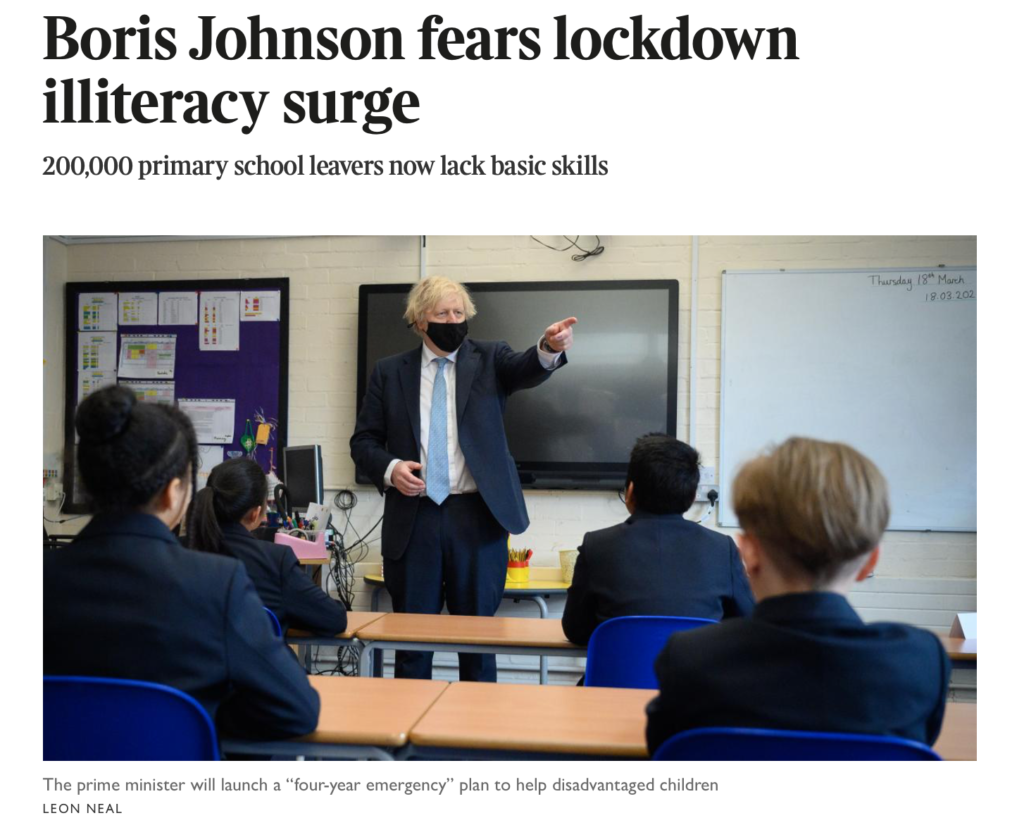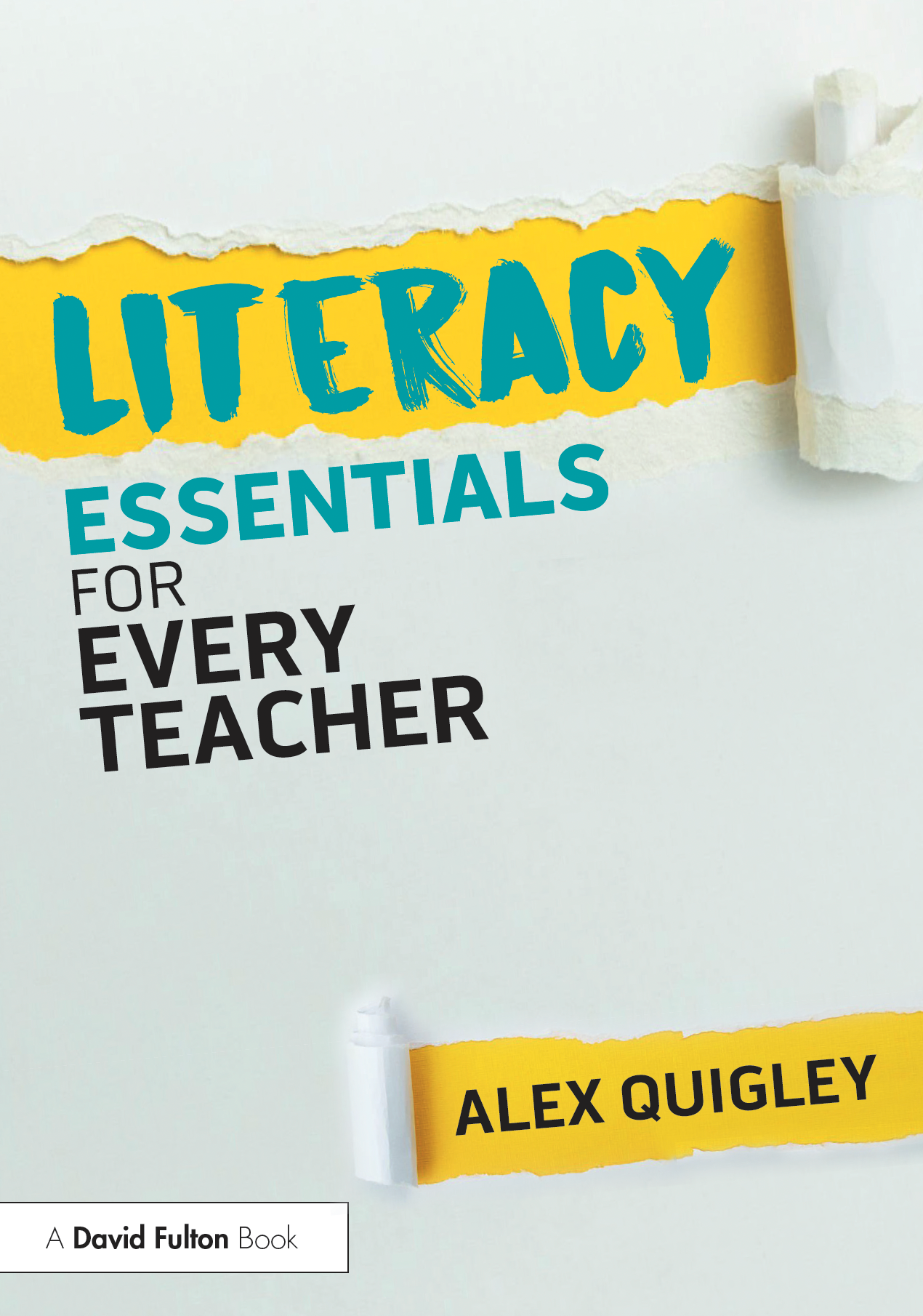The importance of tending to pupils at the transition between primary and secondary school is well-established. The obvious focus, understandably, attends to the pastoral needs of pupils: making them feel safe and secure in their new ‘big school’ surroundings. Crucially, there is also an increasing recognition that making curriculum connections and charting the ‘language leap’ at transition will also matter to pupil success at secondary school.
In the Sunday Times last week, an increasing “illiteracy surge” at the transition was identified. Sustained support has been mooted to attempt to address this issue.
For school teachers and leaders, this acute issue at the transition won’t be a surprise. The ‘language leap’ between year 6 and year 7 is not a new phenomenon. Back in 2017, an issue with literacy and reading at the transition was identified. Of the 165,000 pupils from the 2016 GCSE cohort who did not get a level 4 in their SATs (equivalent to not meet ‘expected standard’ for reading), only 11% went onto achieve a C in English and Maths at GCSE
Indications that the pandemic may have worsened the issue – seeing the reading rich get richer and the reading poor get poorer in year 7 – would prove sadly predictable.
More recently, in a report by OUP and the Centre for Education and Youth (CfEY), on ‘Bridging the Word Gap at Transition’, it helpfully identified aspects of the ‘language leap’ at transition. In emerging research, shared by Professor Alice Deignan, from Leeds University, they identified:
“In an average day at secondary school, pupils are exposed to three or four times as much language as at primary school, purely in terms of quantity. With such a massive increase in the quantity of language, the number of unknown words fired at pupils during a lesson increases similarly. These reach a level where pupils cannot use normal strategies to work out their meaning, such as using overall context. Pupils are being pushed far out of their comfort zone academically.”
At first glance, these language differences reflect the sheer breadth of language and subjects in secondary school, rather than the depth and complexity of the KS2 curriculum.
There is a great deal of sophisticated language being learnt in key stage two. One of my memorable professional experiences, as an English Subject Leader in secondary, was analysing the work books of year 6 pupils. As a department, we recognised that the vocabulary the attending language, and particularly grammar analysis, was more sophisticated than what we delivered in year 7. As a result, we endeavoured to increase the challenge in the KS3 English curriculum.
Crucially though, when compared to the language use science in year 6 and then in year 7, for example, I doubt there is the equivalent match up with curriculum challenge across the transition.
A key difference then between primary and secondary school is the sheer range of complex academic domains. Pupils can go from studying computer science, to physics, to German, to Geography, and more, in a single day. In this context, they can find they can rely on very little prior knowledge of the topic and the language they are expected to read and understand.
Connecting the curriculum across the transition is difficult and teachers seldom have the time and train to support, or even notice, the language leap that pupils experience. This is then a challenge for pupils and teachers.
Supporting the ‘language leap’
One helpful solution is to train all secondary school teachers in reading, writing and language development. For a busy biology or teacher, it may seem extraneous that the explicitly teach reading or writing in their classroom, but for the many pupils with poor literacy levels, this may prove critical for them to access the school curriculum when the reach secondary.
Great teaching, with the ‘language leap’ in mind, bolstered by targeted academic support for those pupils with weak literacy in year 7 who need it to access the curriculum, is the complex but compelling answer to any “illiteracy surge”. No amount of GCSE interventions later on will compensate for their early key stage 3 experience. Secondary school success in national exams at 16 and 18 is predicated on pupils accessing the key stage 3 curriculum more than it is intensive GCSE interventions with recycled exam papers. This was true before the pandemic and will continue to be the case long after.
Training secondary school teachers in teaching reading, writing, academic talk, and more, with the specific attention to their subject – named as ‘disciplinary literacy’ – could likely prove an accessible and attractive starting point. In the aforementioned report on the ‘word gap at transition’, Dr Jessie Ricketts reported how secondary school teachers felt ill-equipped with language development training.
(Disciplinary Literacy – Fig 1 – from ‘Improving Literacy in Secondary Schools Guidance Report’)
Given the likely impact of the pandemic, making apt curriculum adaptations, whilst paying close attention to how well pupils access the language of secondary school, should be at the forefront of secondary school teachers’ minds.
Of course, effective diagnostic assessment to judge pupils’ language strengths and gaps will likely prove important. This may be identifying baseline language knowledge with subject specific vocabulary quizzes, or for some, it may be beginning with a standardised reading age test, before digging into any specific literacy issues (e.g. decoding, fluency, word knowledge, background knowledge gaps etc.). It may see a more concerted attention on disciplinary reading, the foregrounding of the academic vocabulary that clothes the curriculum at KS3, or the embedding more meaningful reading opportunities into the structure of the school day.
Schools are faced with a tremendous array of challenges in the coming year and in the longer term. Targeted attention at the vital point of transition – from teachers, school leaders, and policy makers – may prove one of the key points to target is the months and years ahead. ‘Illiteracy surge’ or not – the ‘language leap’ at transition has been an overwhelming challenge to for many pupils for too long.
Related reading:
- My blog, ‘The Reading Gap at Transition’, gives specific exemplification of the issue with reading across the transition – see HERE.
- More broadly, I wrote about some of the evidence attending transition in my blog on ‘Thinking about School Transition’ – see HERE.
(Image via Chris Van Pelt: https://www.flickr.com/photos/vanpelt/2707826569/)








Comments